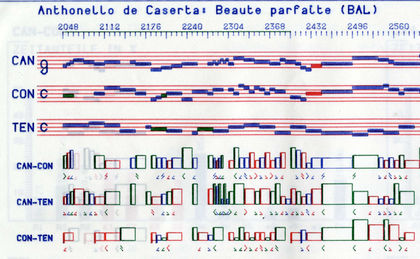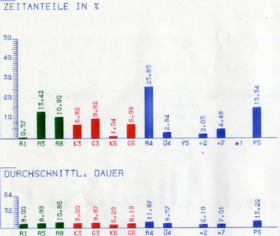Norbert Böker-Heil
The German systematic musicologist Norbert Böker-Heil carried out numerous trials of computer-assisted research in multiple German locations in the 1970s and 1980s. Seizing every opportunity to explore mainframe computer use for musicological purposes, he delved into music printing, database development, and music analysis, always with a focus on repertories of the later middle ages and early Renaissance. Apart from his noted multi-volume survey of sources for the Tenorlied (1979-1988) and his collaborations with other scholars on the integration of textual and musical information, he explored computer-driven sound synthesis (1983) before the establishment of MIDI protocols; outlined the computer possibilities of the RISM AII (manuscript inventory) project (1975) two decades before there was public access to the internet; developed a system for input and plotter output of white mensural notation (1971); producing a near facsimile of the original notation; sought to develop a tool to automatically identify musical structure in polyphonic music (1972); and held up a beacon to future researchers in his thoughts on problems that computer-based researcher would encounter as machine capabilities improved.
Among his most sophisticated projects were the color-coded music-analysis tools he developed for fourteenth-century music in his later years at the Staatliches Institut für Musikforschung in Berlin. From his substantial, multi-faceted evaluations of particular Tenorlieder we are able to reproduce this series of images from his work on Anthonello de Caserta's "Beaute parfaite". The composer came from the generation following Machaut and lived around 1500. Böker-Heil explores (1) rhythmic and pitch movement in this three-voice work and the kinds of intervals that occur between voices; (2) the three-part harmonies that occur in specified time-slices; and (3) contrapuntal details deriving average duration and phrase length. (Each "view" consists of two panels, as there was no way at the time to scale output.)

